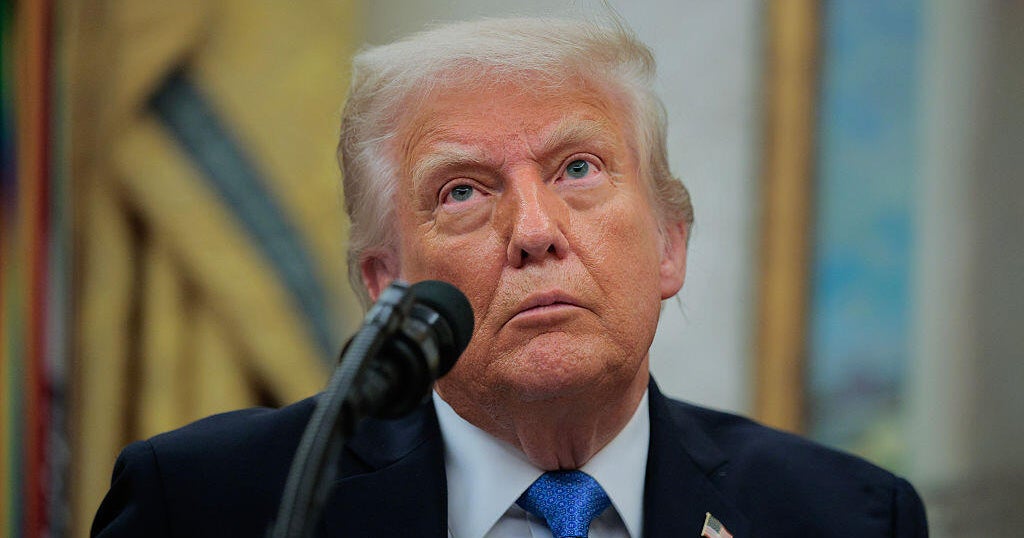Ahead of Memorial Day, President Trump has repeatedly taken credit for an upswing in military recruitment, claiming almost no one wanted to join the military before news of his reelection.
“After years of military recruiting shortfalls, enlistments in the U.S. armed forces are now the highest in 30 years because there is such an incredible spirit in the United States of America,” the president said last week in Riyadh.
In reality, military records show enlistments began rebounding from a pandemic slump long before Election Day. While numbers have continued to rise under Mr. Trump, experts say the so-called “Trump Bump”—a term used by Defense Secretary Pete Hegseth— is more likely the result of recruitment reforms introduced during former President Joe Biden’s term.
Mr. Trump has also exaggerated the scale of the recovery, claiming enlistments have hit modern highs. But public data shows the military is still attracting fewer recruits than it did earlier this decade.
Trump’s misleading claim that military recruitment reached 30-year records
Asked for comment on the source of the defense secretary and president’s claims, a White House official and the Defense Department both pointed to a statement by chief Pentagon spokesperson and senior adviser Sean Parnell. “Since Nov. 5, 2024, the U.S. military has seen the highest recruiting percentage of mission achieved in 30 years,” Parnell said in April.
Publicly available reports from the Defense Department confirm recruiters are currently meeting their goals for the year, but its monthly reports — only published online since 2016 — also show the services frequently adjust annual targets, making historical comparisons less meaningful.
For example, after falling short of their goals in fiscal years 2022 and 2023 amid a tight job market, the Army cut its goal from 65,000 to 55,000 active-duty soldiers for the fiscal year 2024. After meeting that benchmark, it’s aiming for 61,000 recruits this year. These shifting goal posts complicate claims of record performance.
When measured by total recruits — the metric Mr. Trump appeared to explicitly reference — active military enlistments have risen year over year but remain below recent peaks.
In March, the most recent month available, around 13,000 new people enlisted, an increase of nearly 50% over the prior year, but below the 15,000 recorded in March 2018, during Mr. Trump’s first term. The figure includes all branches of the military except for the Coast Guard, which falls under the Department of Homeland Security.
The highest monthly figure under Mr. Trump second term so far was in January—his inauguration month—when 15,597 recruits received basic training dates. That still trails the 16,800 recorded in January 2018 and 20,000 in August 2024 under Biden.

Recruitment could surpass pre-pandemic levels by the end of fiscal 2025 in September, but it’s too early to tell.
And despite recent gains, enlistments remain well below levels achieved three decades ago. In 1990, over 220,000 enlisted in the active military. Those numbers declined after the end of the Cold War and haven’t returned to that level, according to historic Defense Department data.
Trump’s false claim that recruitment fell to record lows during President Biden’s last year
Mr. Trump also claimed military enlistments fell to record lows during Biden’s last year in office.
“Just about a year ago, it was a big story, front page of every paper all over the world, that nobody wanted to enlist in our military,” Mr. Trump said.
That’s false. Defense data shows military recruitment began to recover after COVID-era declines in fiscal year 2023 and continued to grow in 2024. That year, 146,473 people signed active-duty contracts—about 12,000 more than the previous year.
Mr. Trump has further suggested enlistment was at a record low right before news of his election. In fact, 10,993 people enlisted in October 2024, the last full month before Election Day, a 60% increase over the same month in 2023.
Experts say recruitment reforms explain why recruitment has ticked up, despite longterm challenges
Experts who study military enlistment say the continued improvements have more to do with changes in recruitment strategy and compensation than the change in commander-in-chief.
Katherine Kuzminski of the Center for a New American Security credits Biden-era programs like the Army’s Future Soldier Prep Course launched in 2022 and the Navy’s Future Sailor Prep Course launched in 2023 for helping candidates struggling with enlistment requirements. In 2024, about 25% of the Army’s enlistments came through a prep course.
“It’s harder to convince someone to be interested in military service than it is to train them to a standard,” Kuzminski said.
Defense statistics show over 70% of American youths don’t meet qualifications for military service because of rising rates of obesity, drug use, mental health issues, and difficulties meeting educational standards.
Polls show interest in service has also declined in the last decade, and defense representatives have cited flagging trust in institutions, a shrinking population of veterans who serve as models of service, and the number of job options in the private sector, depending on the strength of the economy.
To better compete with private sector offers, Congress approved a 14.5% pay increase for junior enlisted troops last December that took effect this year.
“It would benefit the DoD to publicly also recognize that they’ve made quite a few adjustments to the recruiting enterprise instead of the perception that’s coming out that it’s driven solely by partisan politics,” Kuzminski said, “Because I don’t think that for most American youth that’s the driving factor for their joining the military.”
https://www.cbsnews.com/news/trump-touts-record-breaking-military-recruitment-but-numbers-already-rising/


